Web Dev Services
The Beginner’s Guide to Website Development
LantroTech Marketing
August 4, 2023
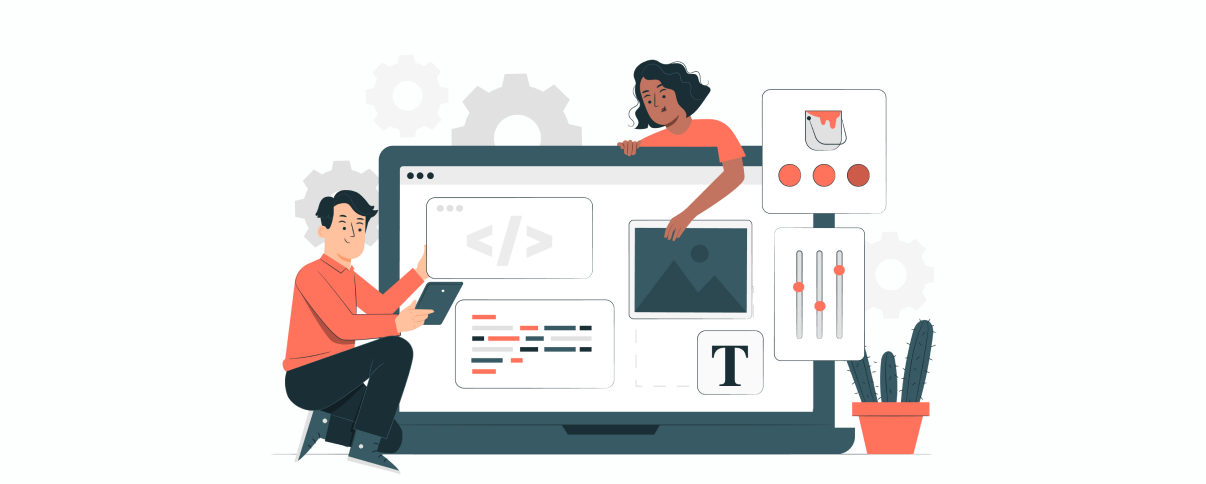
For the ever-increasing tech-savvy generation, this is what an average day looks like: scrolling through various websites to interact with friends, order and purchase products from the comfort of their homes, explore the plethora of educational and informational content available all over the internet and engage in thousands of other activities.
If you are also an active internet user, then you probably wouldn’t be surprised to find out the rapid growth in the number of internet users; as of 2023, there are 5.07 billion internet users globally, which is equivalent to 63.5% of the world’s total population. This trend also accounts for the booming web development industry and the rising demand for web developers worldwide.
So one thing is clear; the internet is here to stay! It is the primary source of information, connection, and entertainment, and if you still haven’t created a stellar website for your business, then you need to do that as soon as possible.
Now you must be wondering, how do you create a website? Well, that’s precisely why we’re writing this blog. Keep reading to familiarize yourself with Web Development basics and what you need to do to develop a website that anyone on the web can access.
Getting Familiar with Web Development Basics
1. Website
A website is a collection of files and information stored on servers which in turn are connected to the internet. Websites usually contain links to one another and are created by individuals or organizations. These websites are then accessed via browsers like Google Chrome or Mozilla Firefox, which load and display content on your computer.
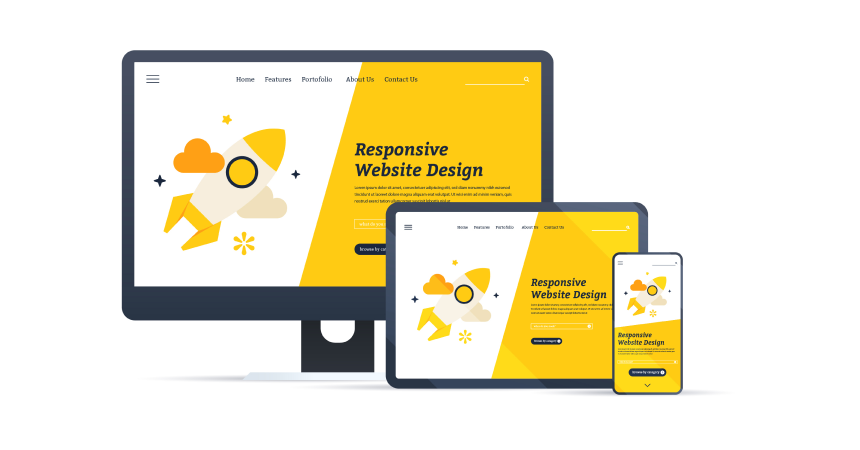
2. URL
URL (Uniform Resource Locator) is a unique identifier that offers access to information and resources available on the internet. It comprises different elements e.g. network communication protocol, domain name and extension.
3. Domain Name
Domain Name refers to your website’s address. This is what users type in a browser’s search bar to access your website. Every website has a unique domain name and two sites cannot share the same domain name.
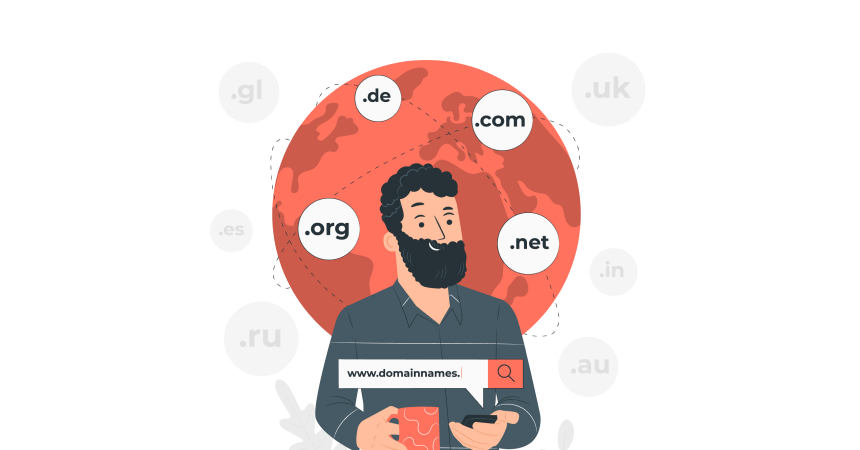
4. IP Address
Domain Name refers to your website’s address. This is what users type in a browser’s search bar to access your website. Every website has a unique domain name and two sites cannot share the same domain name.
5. Web Hosting
Web Hosting refers to the space allocated on a web server by a hosting provider to a website so that it can store its files. Web content such as files, images etc. are made viewable online through web hosting.
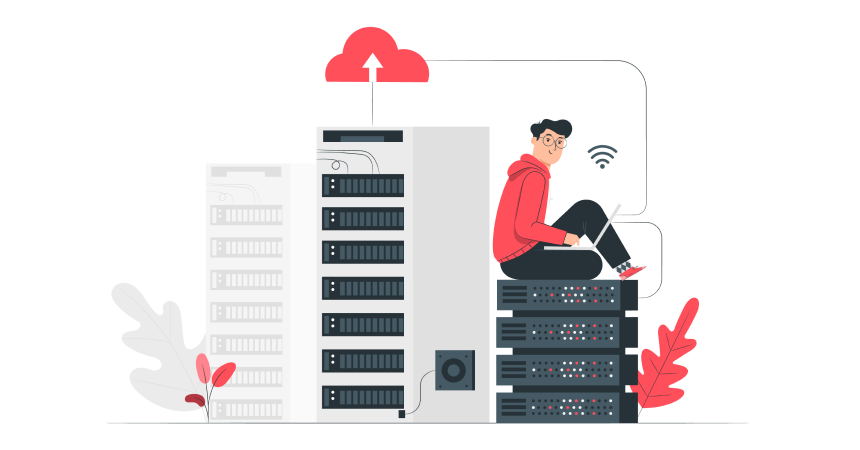
6. Client-Server Model
The client-server model facilitates communication between user devices and centrally located servers via a network. User devices refer to laptops, smartphones, and computers and they are considered the “clients” of the servers. These devices send requests to the servers and the server responds by providing the requested web pages, applications etc.
7. HTTP vs HTTPS
HyperText Transfer Protocol (HTTP) enables you to move between site pages and websites by connecting your website request to the remote server containing all website data. When you search for something through a search engine or type in a website on your browser, HTTP acts as the translator between you and the internet; it reads both your website request as well as the code sent by the server and presents it to you in the form of a website.
HyperText Transfer Protocol Secure (HTTPS) is HTTP with encryption and verification. HTTPS is much more secure than HTTP as it uses TLS (SSL) to encrypt HTTP requests and responses and also digitally signs the requests and responses.
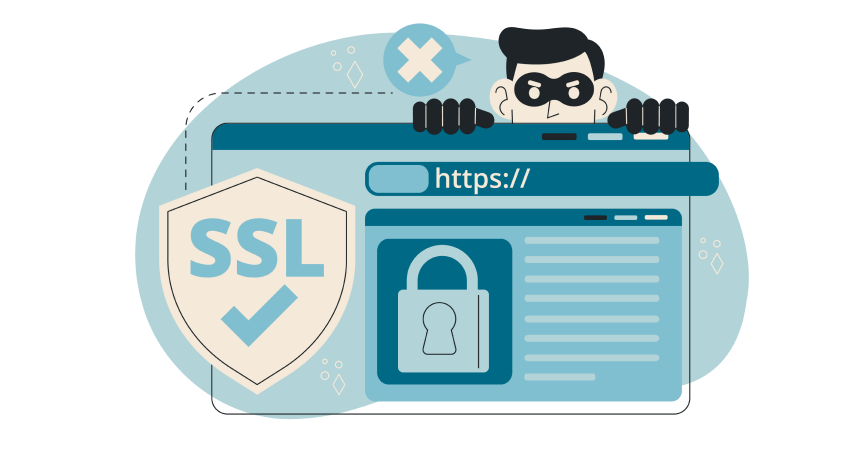
8. Coding
Coding is the way we communicate with computers. By writing code for servers and applications via programming languages, we create a set of instructions for the computer to follow. This way, you can decide the actions a computer will take and cause it to behave faster.
9. Front-End Development
The front-end side of a website primarily refers to the part of the website that you can see and interact with as an internet user. A front-end developer uses languages like HTML, CSS, and JavasScript to create a more responsive design that users can interact with, e.g. playing videos, highlighting text, maximizing or minimizing images, etc.
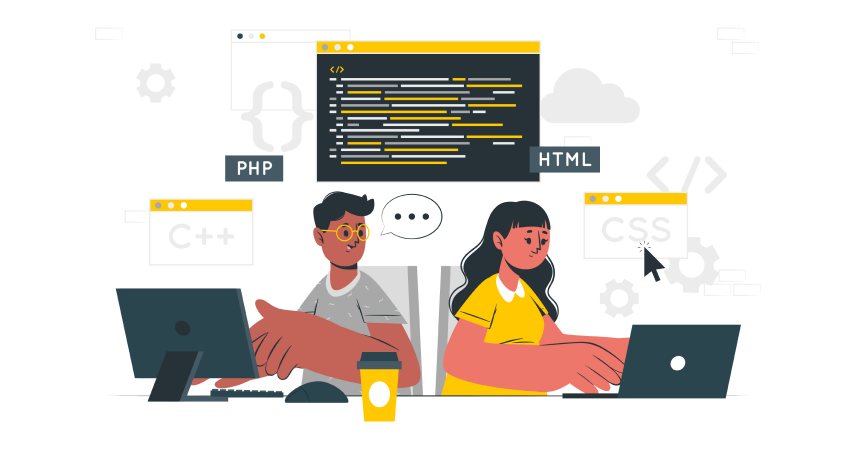
10. Back-End Development
Back-end development refers to everything that you can’t see on a website. It’s the digital infrastructure which contains numbers, letters and symbols. Back-end developers work on server-side software and ensure the smooth functioning of the website by focusing on databases, APIs, architecture and servers.
11. CMS
A Content Management System (CMS) is a web application containing various programs to produce and manage web content. A CMS isn’t used to build a website, but it does allow you to structure the website with your code by ensuring the provision of plugins and add-ons. While a CMS is beneficial for all types of websites, it is especially useful for e-commerce and blogging.
12. SSL Certificate
An SSL Certificate incorporates code on your web server, ensuring more secure online communications and an encrypted connection. It also keeps online interactions private, so customers feel more confident to share personal data on your website.
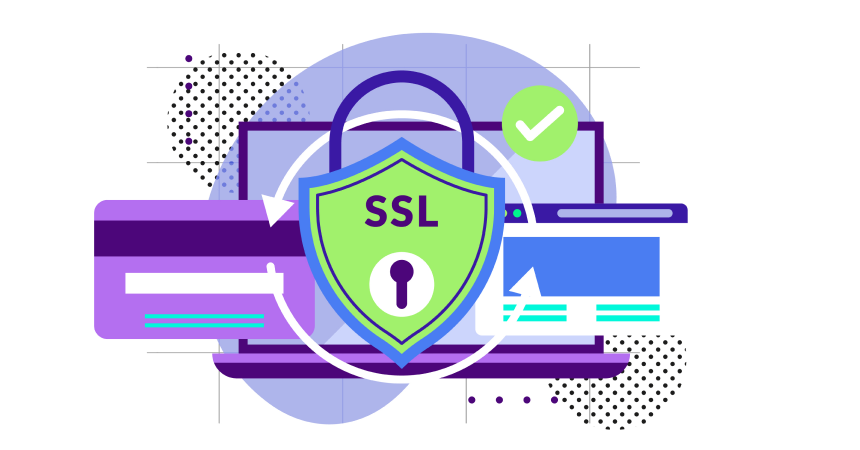
The Website Development Process
Creating a website from scratch certainly isn’t easy since each development path varies based on the website’s nature, type, programming languages, and resources used. The following section will take you through each step of the web dev process so let’s dive right into it.
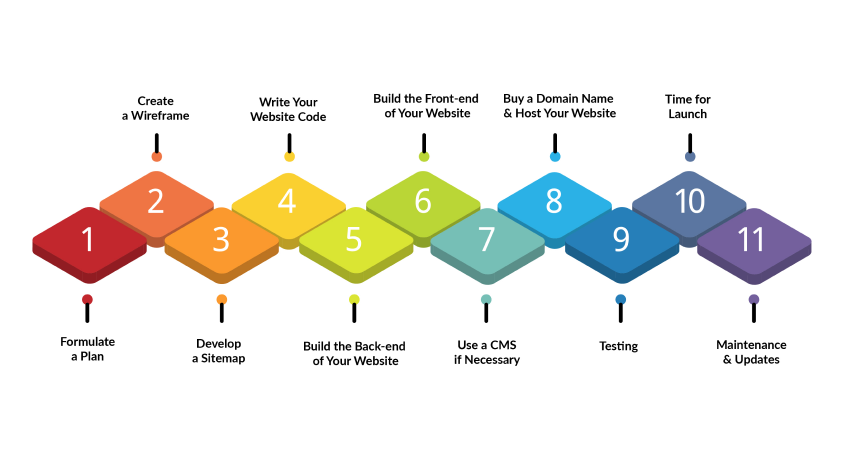
1. Formulate a Plan
You first need to chalk out a detailed plan for your website, for which you will have to consult different teams and individuals in your organization. As a Web Developer, you must have complete clarity about the website you are about to create and for that, you will need to answer a few questions:
i. What is the goal of your website?
ii. Who is your target audience, and what actions do you want them to take on your website?
iii. What kind of website are you building, e.g. e-commerce, informational, personal, blog, etc.?
iv. What kind of content will you share, and how frequently will you publish it?
v. What is the purpose of your content?
vi. How will you structure your website to ensure a smooth and hassle-free user experience?
vii. What is your budget?
These questions can only be answered accurately if you involve your sales, marketing, development and finance teams. Interacting with them will help you sort out your priorities, make informed decisions and create a roadmap that will guide the web dev process.
2. Create a Wireframe
Once you have an idea of what your website should look like, you need to create a visual representation of it in the form of a wireframe. You can either draw it on a whiteboard or use online tools like Figma. A wireframe will help you understand and identify the best places to insert text and images on your webpages. Just remember to work closely with your developer so they know what you have in mind and can offer advice and suggestions based on their knowledge.
3. Develop a Sitemap
The next thing you need to do is create a sitemap for your website, providing the developer with enough information to turn your vision into reality. Content is of the essence at this stage so bring your Content Strategy and SEO teams on board; their input will play a significant role in categorizing pages and linking structure. Here are a few questions you need to answer while planning out your website:
i. What pages do you want on your website?
ii. What content will go on those pages?
iii. How will those pages be organized into categories?
iv. What is the hierarchy of the pages?
v. How will you establish links between the pages?
vi. Which pages are essential to your website and user experience, and which pages can be removed or combined?
4. Write Your Website Code
Now that you have your website plan all figured out, you can start writing code. Developers use different languages for the front-end and back-end of websites and to incorporate functionalities like design, interaction, etc. The different languages work in synergy to build and run your website.
Let’s walk you through the most commonly used languages in web development:
JavaScript is rapidly evolving and is now the most widely used language globally. If you really want to make your website stand out, you simply cannot ignore JavaScript during development. That’s because it possesses functionality like animations, automation, and interactive features which take your website to the next level. Popular JavaScript frameworks are React, Vue.js, and Angular.
i. HTML
HyperText Markup Language (HTML) has been around since the 1990s. While it plays a key role in laying the foundation for a website, it does not possess the functionality to make your website look visually appealing. So, in addition to HTML, you will have to use languages like CSS, PHP and JavaScript as they enhance and modify your website.
ii. CSS
We all want our website to be super attractive so it grabs attention and motivates the audience to move from one page to the next. Cascading Style Sheets (CSS) enable you to create the website of your dreams by adding design elements like typography, colors, and layouts. Some popular front-end CSS libraries include Bootstrap, Foundation, Materialize, Semantic UI, and Tailwind CSS.
iii. JavaScript
JavaScript is rapidly evolving and is now the most widely used language globally. If you really want to make your website stand out, you simply cannot ignore JavaScript during development. That’s because it possesses functionality like animations, automation, and interactive features which take your website to the next level. Popular JavaScript frameworks are React, Vue.js, and Angular.
iv. PHP
Hypertext PreProcessor (PHP) is the most widely used server side scripting language embedded in HTML. It is used to create dynamic websites and applications like Facebook. It can also perform other functions like manage content, databases, session tracking, send and receive cookies, send emails, etc. The most famous PHP frameworks are Laravfel, Codelgniter, and Symfony.
5. Build the Back-End of Your Website
The back-end of the website stores and handles the data that will ensure functionality on the front-end. It is made up of two components:
i. Databases:
They store, organize and process data so that server requests can retrieve it. The different types of databases include:
- Relational Database: In a relational database, data and information are organized into predefined relationships and stored in multiple tables of columns and rows making it easy to understand the connection between the different tables. Examples of relational databases include MySQL, PostgreSQL, and Oracle.
- NoSQL Database: NoSQL databases are optimized for building modern applications which require large data volume and flexible data models. They use different data models to access and manage data and are well-known for their ease of development, and superior functionality and performance.
- Document Database: Document databases store information in documents. They have an intuitive data model that developers can quickly and easily work with, a flexible schema that adjusts your data model as application needs change, and the ability to horizontally scale out. They are great alternative to relational databases and are used in a variety of industries.
ii. Servers:
Servers refer to the hardware and software that make up a computer. They send, process and receive data requests. The browser basically sends a signal to the server when it requires specific information, after which the server makes sure to get the information from the database and transfer it to the client.
These two components work together to create the structure and foundation for each website.
When it comes to website development, back-end developers usually establish three things:
- Your logic code which guides the website on how to respond to different requests and how various objects will interact on the website.
- Your database management which refers to how your website organizes, manages and retrieves its data.
- Your infrastructure which is how your website will be hosted.
Once these components are in place, you can move on to front-end development.
6. Build the Front-End of Your Website
The front-end side of your website, as discussed earlier, is what your audience will see when they visit and use your website. Front-end development uses a combination of programming languages like JavaScript, HTML and CSS.
This is the point of the web dev process when you turn the wireframe that you created at the beginning into reality. At this stage, you decide on different visual components, e.g. typography and fonts, navigation, positioning, and browser compatibility and responsiveness to improve your website design.
7. Use a CMS if Necessary
Yes, we know that Content Management Systems lack flexibility and give you less control over your front-end. But think about all the benefits they bring. For starters, they’re easier to use, and you have to write much less code yourself. They also contain other tools which enable you to host the site, store information, write blogs, publish landing pages, acquire leads, and build an email list.
A CMS can guarantee a more profitable website with only half the work. If you want to put in less effort but achieve more significant results, consider using CMS options like HubSpot, WordPress, Magneto, etc.pibus leo.
8. Buy a Domain Name and Host Your Website
By this time, your website will have an IP address, but it will also need a domain name, which your target audience can use to find your site. Many companies provide this service, e.g. Hover, WordPress, Squarespace, etc. Domain registrations normally last for a year until you’re required to renew.
You also need to choose a web hosting service. Many web hosting providers exist e.g. Bluehost, DreamHost, Hostinger, etc. If you’re hosting a new website, it would be best to choose a web hosting plan which includes features like free domain name, free SSL certificate and WordPress installation.
9. Time for Launch
Congratulations! You’ve made it to the final stage. Once you’ve acquired a domain name and linked it to your host, you can prepare to reveal your website to the world. But wait, there are still a few more things you need to do before taking this step. Make sure to perform extensive QA of your new website to identify all possible glitches, optimize the website for SEO, and assign post-launch responsibilities to your team. You can push your website live as soon as you fulfill these requirements.
10. Maintenance and Updates
Congratulations! You’ve made it to the final stage. Once you’ve acquired a domain name and linked it to your host, you can prepare to reveal your website to the world. But wait, there are still a few more things you need to do before taking this step. Make sure to perform extensive QA of your new website to identify all possible glitches, optimize the website for SEO, and assign post-launch responsibilities to your team. You can push your website live as soon as you fulfill these requirements.
Start Investing in Web Development
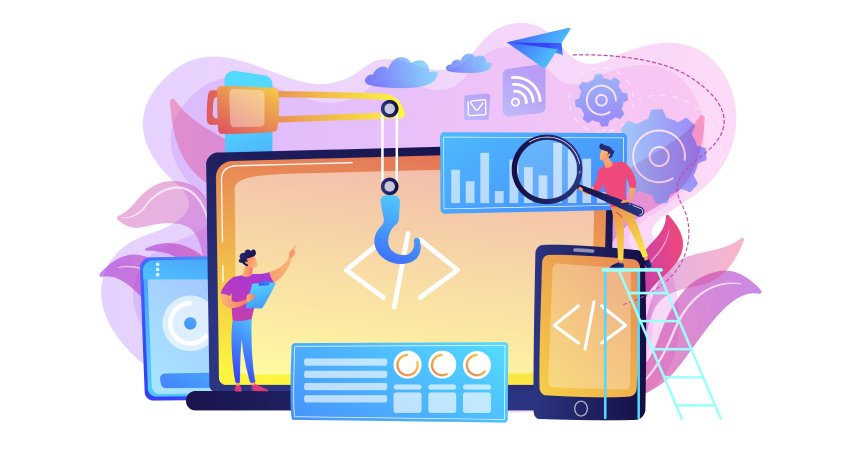
The internet isn’t going anywhere, and we can only expect newer innovations to come in with time. This means Web Developers will continue to have a prime role as they will be responsible for necessary improvements as web design trends and user needs evolve overtime.
Web Development is everywhere, in the form of your favorite social media channels and apps you use on your phone. Therefore, it would be in your favor to take the time to understand programming and learn web development to create the best possible website for you and your customers.
However, if you don’t have the time and development skills to create a fantastic website, worry not! At LantroTech, we provide tailored end-to-end web design and development services. Whether you are looking for a new website or want to revamp your existing digital presence, our experts will ensure high-quality service, keeping your unique needs and preferences in mind. To learn more about our Web Development services, contact us today by simply filling out the form below.